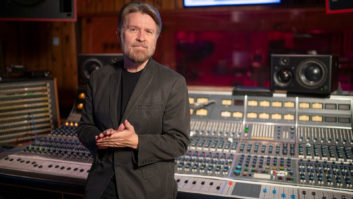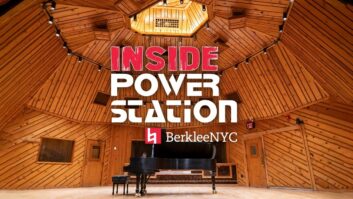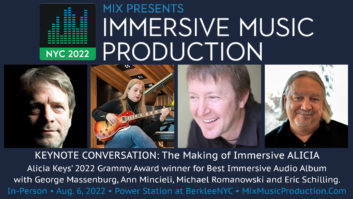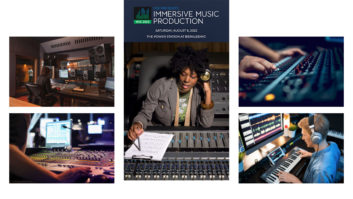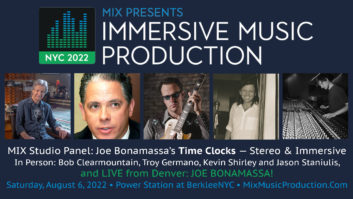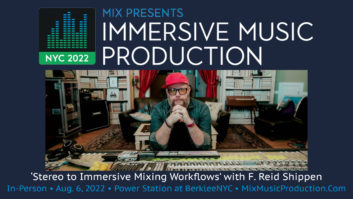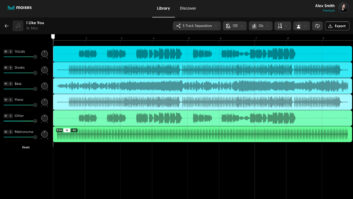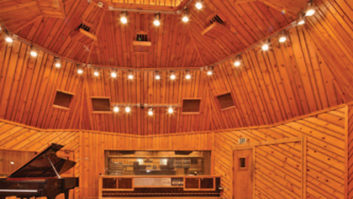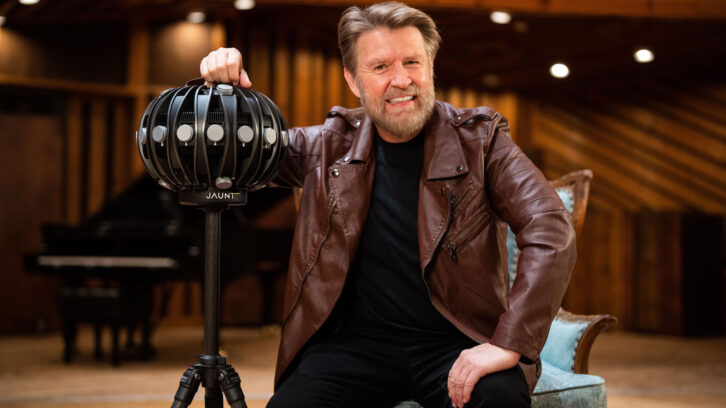
New York, NY (November 14, 2022)—It’s hard enough as an individual—let alone an established, highly respected organization with a nearly 80-year history—to stay current, especially with today’s increasingly rapid changes in technology, culture and entertainment. So Berklee College of Music, Boston, Mass., could be forgiven for resting on its laurels and assuming a grandfatherly role as a pioneer in music education and recording.
But that’s never been the Berklee way.
Since 1945, when founder Lawrence Berk pulled together a faculty and curriculum to create Schillinger House (changing the name in 1954 to Berklee School of Music), the institution has maintained, and even built upon, a cutting- edge approach in its educational philosophy, its state-of-the-art facilities and its inclusion of all forms of music—and now media—delivery. Its emphasis on the use of technology in the creative process led to radical new programs in sound synthesis and music production and engineering dating back to the 1960s. The School became a College in 1970.
It doesn’t stop. In just the past 15 years, Berklee has added three new major buildings to its Boston campus, complete with state-of-the- art, John Storyk (WSDG)-designed recording studios and performance spaces; expanded internationally with a booming new campus in Valencia, Spain; established a healthy presence in Abu Dhabi; and, most importantly for this story, acquired the legendary Power Station Studios (aka Avatar) in 2017 as part of a unique public-private-nonprofit partnership with the City of New York and philanthropist Pete Muller, reopening in January 2021 as Power Station at BerkleeNYC and welcoming its first class of masters students that fall.
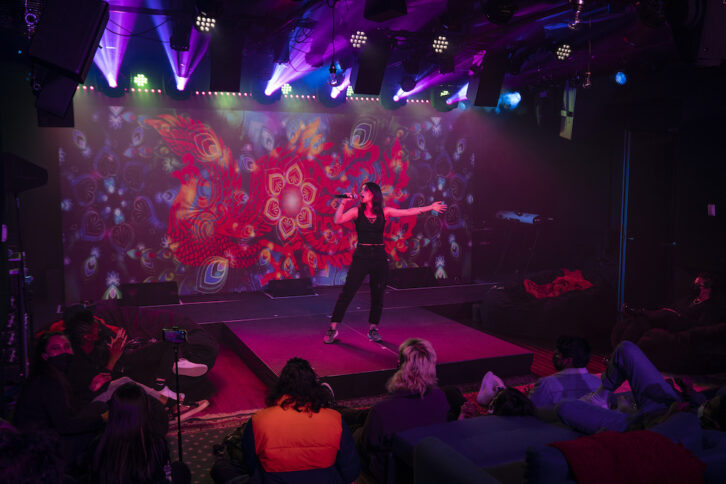
“You should hear all of the songs the students have written about studying here—the emotions run the gamut, from inspiration to intimidation!” says Stephen Webber, executive director of BerkleeNYC and dean of Strategic Initiatives for Berklee. “Students are hyper-aware that ‘history has its eyes on them,’ so to speak, and if Nile Rodgers, Cyndi Lauper, David Bowie and Whitney Houston can create something truly epic and culture-changing within these walls, then why can’t they?”
Webber, who spent years in Spain launching the Valencia campus before returning to New York to oversee the birth of BerkleeNYC, is something of an audio Renaissance man. He wrote one of the first books on scratching, turntablism and DJ skills and is equally conversant in rock, jazz, orchestral and Broadway cast album recording. Under his direction, Power Station at BerkleeNYC has become a hybrid operation that on the one hand is a working commercial facility, and on the other hand teaches songwriting and production, writing and design for musical theater, live music production and design, and even how to produce 360-degree, head-tracking sound fields for playback alongside 360-degree, 4K, 3D video presentations of big bands in action, all viewed through Oculus headsets.
BerkleeNYC Turns Legendary Power Station Back On
“Recording studios need to think of themselves as content creation spaces if they want to flourish,” Webber says. “Yes, the recordings made here sound incredible! And, the videos look amazing! Our students and clients frequently do live XR music video shoots in front of the LED wall with state-of-the-art lighting in the Blackbox. They do 10-camera shoots in Studio A with the installed PTZ cameras, or they break out the RED cameras, cranes and jibs to capture epic, cinematic footage. Large-format music studios should enthusiastically embrace video— if you can’t see it, it didn’t happen!”
Following the site’s purchase in 2017, Berklee kept the studios open for about 18 months, then shut the facility down completely for an infrastructure overhaul, including an intense focus on wiring and connections—involving the installation of a Dante network—and the buildout of the lower level, which now includes the versatile Blackbox theater, complete with LED wall, lighting rig, cranes, 360-degree Jaunt cameras and a modern video/ broadcast- style control room, linked to 30 PTZ cameras throughout the five-floor facility, including 10 in the legendary Studio A.
The installation of a new infrastructure, and the establishment of a professional video/ VR/ XR/AR production base, was more challenging than it might appear, mainly because they didn’t want to touch the walls and endanger the acoustics of the historic studios. They also wanted to keep the Neve 8088 console in Studio A, the SSL 9000J in Studio B, and the Neve VRP72 with Flying Fader automation in C.
The third floor, which in the 1970s and ’80s was a parking garage, splitting the studios on Floors 2 and 4, has been completely tricked out with state- of-the-art audio labs and VR/XR learning centers, as well as student and faculty areas.
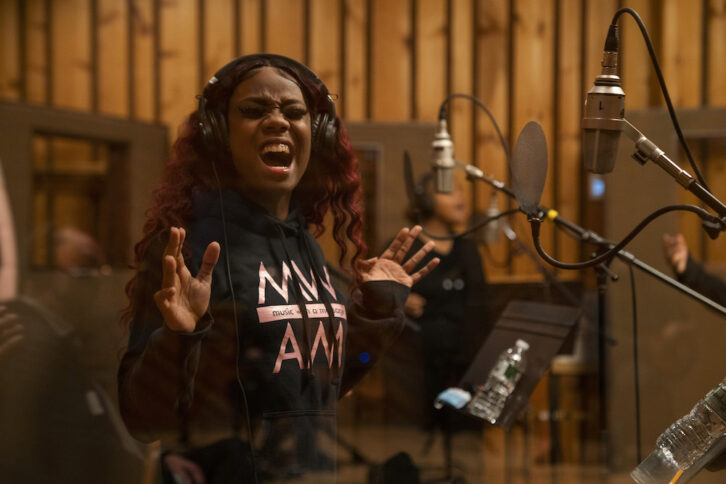
One gets the sense that Webber, with his professor-meets-music-producer demeanor, likes living on the bleeding edge—like he somehow sees what the world might look like five or 10 years from now.
“360 cinematic picture is to the visual experience what headphones are to the auditory experience,” he says. “Remember the first time you put on a really good pair of headphones and blocked everything else out but your favorite music? Experiencing great content on a good VR headset, like the Meta Quest 2, is a similar experience for most people. It commands so much more of your brain’s attention than looking at an external screen. It deletes the distractions of your environment.
“In our lifetime, we’ve gone from listening to music mostly on speakers to listening to music mostly on headphones,” he continues. “Compare the current size of the headphone industry to the size of the hi-fi speaker industry. Things have shifted in the last 30 years.
“Google Glass, with all its flaws, was not even the Palm Pilot of VR/AR headsets. Once you can have a totally immersive experience in something as convenient and lightweight as a pair of sunglasses, humankind will undergo another seismic shift—there’s no stopping it. Like radio, movies, TV, the Internet, the smartphone…this will fundamentally change the way we interact with content, and with each other.
“Are the artistic applications for music exciting? Absolutely! Incredibly beautiful art is already being created!
